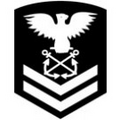![.mw-parser-output .infobox-subbox{padding:0;border:none;margin:-3px;width:auto;min-width:100%;font-size:100%;clear:none;float:none;background-color:transparent}.mw-parser-output .infobox-3cols-child{margin:auto}.mw-parser-output .infobox .navbar{font-size:100%}@media screen{html.skin-theme-clientpref-night .mw-parser-output .infobox-full-data:not(.notheme)>div:not(.notheme)[style]{background:#1f1f23!important;color:#f8f9fa}}@media screen and (prefers-color-scheme:dark){html.skin-theme-clientpref-os .mw-parser-output .infobox-full-data:not(.notheme)>div:not(.notheme)[style]{background:#1f1f23!important;color:#f8f9fa}}@media(min-width:640px){body.skin--responsive .mw-parser-output .infobox-table{display:table!important}body.skin--responsive .mw-parser-output .infobox-table>caption{display:table-caption!important}body.skin--responsive .mw-parser-output .infobox-table>tbody{display:table-row-group}body.skin--responsive .mw-parser-output .infobox-table th,body.skin--responsive .mw-parser-output .infobox-table td{padding-left:inherit;padding-right:inherit}}
United States Navy League Cadet Corps
Country
United States
Role
Youth Development Program
Website
https://www.navyleague.org/
Military unit Official Seal of the U.S. Navy League Cadet Corps.jpg](http://upload.wikimedia.org/wikipedia/en/thumb/1/1d/Official_Seal_of_the_U.S._Navy_League_Cadet_Corps.jpg/317px-Official_Seal_of_the_U.S._Navy_League_Cadet_Corps.jpg)
| United States Navy League Cadet Corps | |
|---|---|
| Country | |
| Role | Youth Development Program |
| Website | https://www.navyleague.org/ |
The United States Navy League Cadet Corps(USNLCC or NSCC) is a non-profit organization for ages 10-13 [1] and is the junior version of the United States Naval Sea Cadet Corps (USNSCC or NSCC) the program is aimed at development for younger cadets, aged 10 through 13, under the auspices of the Navy League of the United States. The organization provides opportunities for children to learn about the seagoing military services, community service, citizenship, and an understanding of discipline and teamwork so that they are prepared for membership in the NSCC if they decide to. While NLCC cadets can go into the NSCC when they turn 13, they may also elect to remain in the NLCC until age 14, when they must either transfer into the NSCC, or leave the program.
Contents
NLCC cadets can be seen wearing US Navy uniforms with the insignia of NLCC membership. NSCC officers administer the program and supervise the cadets. NLCC units are grouped with NSCC units under the supervision of regional and senior regional directors. However, those who have achieved a high training status can operate semi-independently from their attached NSCC Units. NLCC units that are of independent status are called "Training Ships" NLCC units who do not have enough cadets to warrant independent status are attached to NSCC units as called companies. [2]





